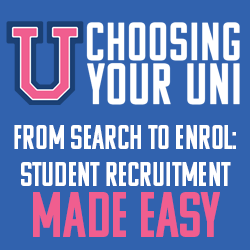As universities around the world reimagine their international strategies, a quiet revolution is reshaping transnational education (TNE). Long defined by expensive branch campuses and complex offshore operations, TNE is now moving toward models that are lighter, more collaborative, and—crucially—more sustainable.
At its heart, this shift reflects a simple question: how can institutions deliver global education without replicating the old, resource-heavy models of the past?
For decades, branch campuses have been seen as the pinnacle of global expansion—a way for universities to plant their flag abroad. Yet, behind the glossy façades, many face challenges that are becoming increasingly hard to ignore: high costs, uneven student experiences, and limited adaptability to local contexts.
The next wave of TNE demands something different—something that puts students, not real estate, at the centre – and the Nurture Higher Education Group is at the centre of this.
Instead of bricks and mortar, forward-thinking providers are investing in partnerships. These collaborations pair global universities with established local institutions, combining international academic standards with local insight and delivery. The result is a model that’s scalable, culturally attuned, and better aligned with how students want to learn.
For Australian universities, the opportunity is clear. Southeast Asia’s demand for quality higher education continues to surge—but success will depend on responsiveness and collaboration, not replication.
The Two-Degree Advantage
One innovation attracting attention is the Nurture Higher Education Group’s two-degree model: students graduate with both a local and an international qualification, co-delivered through a single program. It’s a structure that opens global pathways while maintaining local relevance—ideal for students who want international credentials without the cost or upheaval of studying abroad.
For universities, the model provides a way to extend their global presence without the financial or operational risks of building overseas campuses.
Any successful TNE partnership must still meet the twin tests of quality and employability. Programs that align academic outcomes with real-world industry needs give students an edge, both at home and abroad. That’s where deeper engagement with employers—through mentorships, internships, and entrepreneurial projects—makes the difference between a qualification and a career catalyst. Nurture’s Global Academy at Siam University in Bangkok, delivering La Trobe University bachelor’s degrees with our industry engagement and internship program, is a sound example of this.
Recent partnerships between Australian universities and institutions in Indonesia and Thailand show what’s possible when collaboration replaces competition. Embedding international curricula into local universities has broadened access, strengthened outcomes, and allowed students to “go global” without leaving home.
These projects also underline the importance of flexibility and student support—two factors that can make or break a TNE venture.
The Call to Action
As the higher education sector navigates digital disruption, demographic shifts, and geopolitical uncertainty, it’s time for Australian institutions to think differently about how they engage in the region.
The question is no longer whether to pursue transnational education, but how.
Models built on partnership, quality, and shared value—like those being developed through initiatives by Nurture Higher Education — show that global education can be both ambitious and achievable. They point to a future where collaboration, not construction, drives impact.
For universities ready to explore this next phase of TNE, now is the moment to engage. The opportunity is on our doorstep—and it’s one that Australia’s higher education sector cannot afford to ignore.
James Kelly is Executive Director, APAC at Nurture Higher Education Group and be contacted via email here.
















